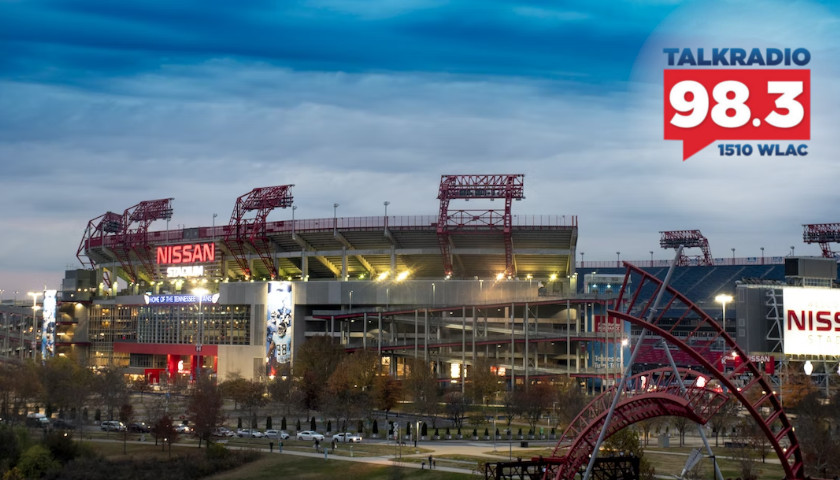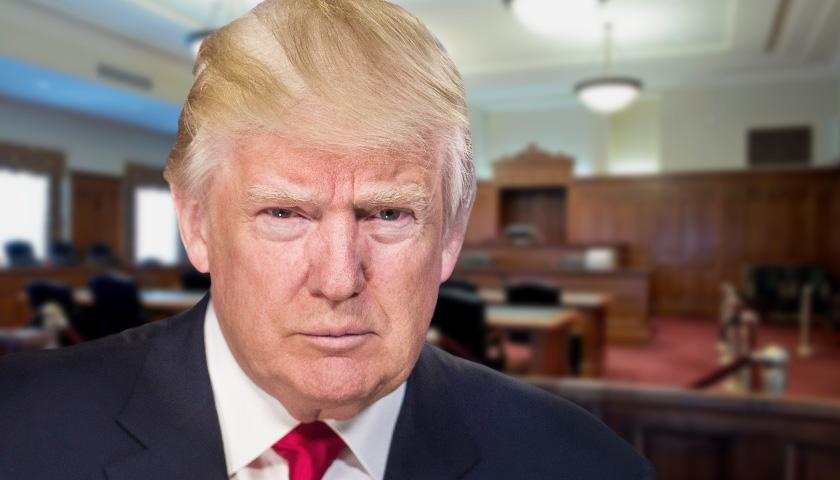Live from Music Row Thursday morning on The Tennessee Star Report with Michael Patrick Leahy – broadcast on Nashville’s Talk Radio 98.3 and 1510 WLAC weekdays from 5:00 a.m. to 8:00 a.m. – host Leahy welcomed journalist for The Center Square Jon Styf on the newsmaker line to comment on Brittney Griner release and dimensions of the $2.1 billion-dollar Tennessee Titans stadium deal.
Leahy: Our good friend Brad Boucek with the Southeastern Legal Foundation is in studio with us on the newsmaker line. A fantastic journalist with The Center Square, John Styf. He writes about the Southeast and covers Tennessee, Georgia, the Carolinas. John, welcome to The Tennessee Star Report.
Styf: Hey, thanks for having me.
Leahy: We’re delighted to have you on. We’re going to talk about the stadium here in just a minute, but we have some breaking news literally minutes ago, and I’d like to get your reaction to this story from the Associated Press. It just came out that Brittany Grinder has been released by the Russians in return for a Russian arms dealer. Your thoughts on that?
Styf: You have to wonder why they waited so long, because that deal was on the table for a long time. There are just a lot of details we don’t know right now about it.
Leahy: Yes, and it was a one-for-one deal with this arms dealer. An arms dealer called the Merchant of Death. Look, I’m glad she’s out, but boy, the Russians were really playing hardball on this one, weren’t they?
Styf: Oh, for sure. And they put her in a bad spot in order to kind of pressure the US to make this move.
Leahy: Yes, they put her in basically almost like a gulag prison camp. She probably would not have survived there. It was that bad from the reports that I’ve seen.
Styf: Right. That’s exactly what I thought they were going to do. And there were a lot of people worried about her and they couldn’t contact her for a while.
Leahy: The United States gave up a very high-level felon, a Merchant of Death, in order to free Britney Griner. I’m glad she’s back. She kind of made an unwise choice by going to Russia, but she’s back and she’s an American citizen, and we’re delighted that she will be safe. So there you go. That’s the breaking news.
Now, John, you have an outstanding record as a journalist and you’ve been covering states in the Southeast and you’ve been covering Tennessee. Your thoughts on this debacle known as the giving of $2.1 billion to the Tennessee Titans deal for this new dumb stadium?
Styf: Right. And I think the biggest deal is that you don’t really know what they’re going to give because they have this intentionally complicated it seems tax deal going on that according to their measures, it’s going to put $2.9 billion into this fund over the next 30 years of this contract or 34 years of this contract. And that’s not counting the $500 million that’s coming from the state. So this thing could be $3 to $4 billion of public funds that end up going into this.
Leahy: That’s much higher than it’s been publicly reported. Elaborate on that a little bit, because what we’ve seen here is they’re going to get $500 million from state taxpayers. And by the way, every resident in the state of Tennessee is going to pay for that.
Somebody in Johnson City, way up north in the Northeast, for Chattanooga, and Memphis. They don’t want to pay for it. They’re never going to go to a Titans game. They’re not going to benefit from it.
But what we’ve seen is there’s another $760 million that’s coming from municipal bond that will be floated in the markets, and the repayment is going to be the increase in the hotel tax, and various sales tax increases have just been approved by Metro Council. But the numbers that you talk about are higher. Kind of explain that to us, if you would, John.
Styf: Yes, they’re going to pay off those bonds with the $760 million in revenue bonds. But also after that, there’s what they call a waterfall effect. And that money is going to go into a capital reserve fund, first of all, which will pay for renovations to the new stadium.
Because you look at this stadium, what is it, 20 years old, and they want to redo the whole thing already with a new stadium, it’s going to be the same thing. You’re not going to spend money to renovate it in the first five to 10 years, but after that, you’re going to spend a bunch of money and do a bunch of upgrades. You’re going to have a $300, $400 million dollar upgrade.
And a lot of that is going to come out of this capital reserve fund, which has the same funding sources that are going to pay for those revenue bonds. And the deal is, if that tax fund doesn’t end up getting all that money in it, then yes, the Titans have to end up paying that amount.
But the projections that were released last week from Metro in all, and this isn’t today money. This is money from now and 34 years into the future, like, I think 2056 is when it ends. It’s $2.9 billion they’re expecting going into that fund.
Leahy: Braden Boucek has a question for you.
Boucek: We keep hearing that the economic activity that’s going to be generated by this is going to more than offset any of the cost that’s going to obtain to the taxpayer. Is that true?
Styf: Right, and that’s what you would say if you’re trying to push a deal like this. But the reality is this has been studied a ton by James Bradberry, who came in and presented at the stadium committee meeting, and he showed how they’ve looked at stadiums, all kinds of different stadiums, stadiums that had districts around them, stadiums that didn’t dom stadiums, and open-air stadiums.
And every time it looks like in a region or a surrounding area, this is diverted spending. Like, just because a new stadium comes in the exact same spot with fewer seats, doesn’t mean that suddenly more money is going to be spent at this stadium.
Boucek: What does diverted spending mean? Our listeners might not be familiar with that term.
Styf: Right now you’re spending money. You’re going to a concert in Bridgestone, and you’re going to a restaurant in a different part of the city. When they build a new stadium and then build a stadium district around it, maybe instead you’ll choose to spend your disposable income around the stadium area.
But that doesn’t mean that more money is being spent in Metro Nashville. That just means that more money is being spent in that one area, in a lot of these stadium areas, what you end up seeing then is that restaurants, and businesses in other areas of the city that are in this tax capture zone end up getting hurt by it.
So this isn’t just helping people. This isn’t just new money. This is people deciding to spend their money in a different spot than they do right now.
Boucek: So what you’re saying is this isn’t new revenue that it would garner, that’s just revenue that would be going to restaurants in North Nashville or on Nolensville Pike or whatever?
Styf: Absolutely. And the only way that would be different is if you could convince someone that international or out-of-state visitors are coming to spend their money here.
But the data doesn’t show that that’s not necessarily happening. And it wouldn’t happen more so with a new stadium than the current stadium for the 10 Titans games that happened there.
Listen to today’s show highlights, including this interview:
– – –
Tune in weekdays from 5:00 – 8:00 a.m. to The Tennessee Star Report with Michael Patrick Leahy on Talk Radio 98.3 FM WLAC 1510. Listen online at iHeart Radio.





